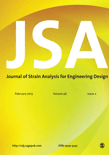
JOURNAL OF STRAIN ANALYSIS FOR ENGINEERING DESIGN
Scope & Guideline
Innovative Insights for Engineering Excellence.
Introduction
Aims and Scopes
- Strain Measurement Techniques:
The journal extensively covers various techniques for measuring strain, including traditional methods like strain gauges and modern approaches such as digital image correlation and non-contact methods. - Material Behavior Under Stress:
Research on the mechanical properties of materials under different loading conditions, including creep, fatigue, and fracture mechanics, is a core focus. This includes studies on functionally graded materials and composites. - Numerical and Analytical Modelling:
The journal promotes the use of numerical methods, such as finite element analysis, alongside analytical models to predict strain behavior in complex structures and materials. - Applications in Engineering Design:
The aim is to apply strain analysis methods to real-world engineering problems, enhancing the design and safety of structures in various fields, including aerospace, civil, and mechanical engineering. - Innovations in Material Science:
The journal emphasizes research on innovative materials, including nanocomposites and advanced alloys, exploring their strain response and potential applications in engineering designs.
Trending and Emerging
- Machine Learning and AI in Strain Analysis:
There is a growing trend towards incorporating machine learning techniques in strain analysis, particularly in predictive modeling and optimization of material properties, reflecting the industry's move towards data-driven approaches. - Functionally Graded Materials (FGMs):
Research on FGMs has gained significant traction, with numerous studies exploring their unique strain characteristics and applications in engineering design, driven by advancements in manufacturing technologies. - Multiscale and Multiphysics Modeling:
Emerging themes in multiscale and multiphysics modeling are prevalent, indicating a trend towards understanding complex interactions in materials and structures, which is crucial for advanced engineering applications. - Sustainability and Eco-friendly Materials:
An increasing number of studies are focusing on sustainable materials and eco-friendly practices, aligning with global trends towards sustainability in engineering design. - Dynamic and Impact Analysis:
There is an upward trend in research addressing dynamic loading and impact analysis, reflecting a broader interest in understanding material behavior under extreme conditions.
Declining or Waning
- Traditional Strain Measurement Methods:
There is a noticeable decline in publications focused solely on conventional strain measurement techniques, likely due to the increasing adoption of advanced digital and non-contact measurement methods. - Basic Material Testing:
Research centered on basic material testing without the incorporation of advanced modeling or innovative applications is becoming less frequent, as the field shifts toward more complex analyses and applications. - Static Analysis of Simple Structures:
Papers focusing on static analysis of basic structures without considering dynamic or complex loading scenarios are less common, indicating a shift towards more comprehensive and realistic modeling approaches.
Similar Journals
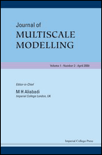
Journal of Multiscale Modelling
Fostering Collaboration in Multiscale ResearchWelcome to the Journal of Multiscale Modelling, a reputable publication dedicated to advancing the fields of Modeling and Simulation and Computer Science Applications. Published by World Scientific Publishing Co Pte Ltd in Singapore, this journal serves as a vital resource for researchers, professionals, and students seeking to explore the intricate relationships between various scales of modeling systems. Since its inception in 2009, the journal has established a pivotal role within the academic community, evidenced by its Q4 ranking in both its respective categories and its interests in contributing to the understanding of complex systems through innovative simulation techniques. With an ISSN of 1756-9737 and an E-ISSN of 1756-9745, the journal encourages submissions that push the boundaries of current knowledge and methodologies. Though currently not open access, articles published in this journal are recognized for their scholarly rigor and innovation, aiming to foster collaboration across disciplines and enhance the practical applications of multiscale modeling techniques in various industries. Join us in exploring the vast potentials of multiscale modeling that lie ahead.
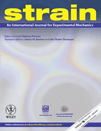
STRAIN
Elevating Research Standards in Mechanical EngineeringSTRAIN is a prestigious peer-reviewed journal published by WILEY, dedicated to advancing the field of mechanical engineering and mechanics of materials. With an ISSN of 0039-2103 and an E-ISSN of 1475-1305, STRAIN has been a pivotal resource for researchers and professionals since its inception in 1965. As of 2023, it holds a commendable categorization in the Q2 quartile rankings for both Mechanical Engineering and Mechanics of Materials, reflecting its significant contribution to the field and ranking in the top percentile of its category. STRAIN aims to disseminate high-quality, innovative research that enhances the understanding of strain phenomena and materials behavior under various conditions. Researchers seeking to publish cutting-edge studies will find a welcoming platform in STRAIN, where they can share their insights with a global audience committed to the evolution of engineering practices. Although it does not offer an Open Access option, its robust editorial standards ensure that all published works adhere to the highest levels of academic integrity and scientific rigor.

JOURNAL OF SANDWICH STRUCTURES & MATERIALS
Exploring the Frontiers of Composite EngineeringJournal of Sandwich Structures & Materials, published by SAGE Publications Ltd, is a premier academic journal dedicated to advancing the study and innovation in sandwich structures and materials. Established in 1999 and running through 2024, this journal has carved out a significant niche in the fields of Ceramics and Composites, Mechanical Engineering, and Mechanics of Materials, earning a notable reputation with its 2023 Q1 rankings in each category. With a commendable Scopus ranking of #53 in Mechanical Engineering and #19 in Ceramics and Composites, it stands out in its commitment to quality research and impactful scholarly contributions. Although there are no Open Access options available, the journal acts as an essential resource for researchers, professionals, and students seeking to explore innovative applications and theoretical advancements in sandwich structures. By providing a platform for high-quality research, it fosters interdisciplinary collaboration and promotes advancements that can inspire future innovations in engineering and materials science.

MATERIALS AND STRUCTURES
Innovating Sustainable Solutions for ConstructionMATERIALS AND STRUCTURES, published by SPRINGER, is a prestigious peer-reviewed journal dedicated to advancing the fields of building and construction, civil and structural engineering, and materials science. With an impressive impact factor and a notable Q1 ranking across multiple categories in the 2023 Journal Citation Reports, including Mechanics of Materials, this journal stands as a vital resource for researchers and professionals seeking to disseminate and access high-quality research. Established in 1985, it has continually evolved, showcasing revolutionary research and emerging technologies in material engineering. The journal provides a platform for innovative ideas and methodologies, contributing significantly to the body of knowledge essential for the advancement of sustainable construction practices. Although it does not currently offer Open Access options, the rigorous peer review process ensures the integrity and relevance of its publications, cementing its role as a leading journal in its field. Researchers, industry experts, and students alike will find invaluable insights within its pages, making MATERIALS AND STRUCTURES an essential read for anyone involved in engineering and materials research.

JOURNAL OF ELASTICITY
Exploring the Dynamics of Materials and MechanicsJOURNAL OF ELASTICITY is a prestigious peer-reviewed journal dedicated to the study and advancement of the field of elasticity and its numerous applications across various disciplines. Published by SPRINGER, and located in the Netherlands, this journal has been a key resource since its inception in 1971, providing critical insights and developments up through 2024. With a commendable impact factor and categorized within the Q2 quartile in areas such as Materials Science, Mechanical Engineering, and Mechanics of Materials, the journal maintains a significant standing in the academic community. Researchers and professionals will find a wealth of knowledge through advanced theoretical and experimental studies published within its pages, contributing to both foundational understanding and practical applications. While currently not an open access publication, the JOURNAL OF ELASTICITY remains an essential platform for innovative research and discussions that shape the future of mechanical sciences.

International Journal of Mechanics and Materials in Design
Empowering Engineers with Knowledge in Mechanics and MaterialsInternational Journal of Mechanics and Materials in Design is a leading publication in the field of mechanical engineering and materials science, published by Springer Heidelberg. With an impressive impact factor, it holds esteemed rankings as Q1 in both Mechanical Engineering and Mechanics of Materials, and Q2 in Materials Science for the year 2023, solidifying its reputation as a significant contributor to the advancement of design methodologies. The journal focuses on the intersection of mechanics and materials, encouraging innovative research that addresses contemporary challenges faced in engineering disciplines. Researchers and professionals alike can benefit from accessing cutting-edge studies contributing to various applications, making it an invaluable resource for staying informed in this dynamic field. While the journal operates under a subscription model, its comprehensive reviews and high-quality original research foster a deeper understanding of material behavior and design principles, thus supporting the academic growth and professional development of its readers.

ENGINEERING FRACTURE MECHANICS
Exploring the Depths of Fracture DynamicsENGINEERING FRACTURE MECHANICS, published by Pergamon-Elsevier Science Ltd, is a leading peer-reviewed journal that specializes in the field of fracture mechanics, focusing on the behavior of materials under stress. Established in 1968 and continuing to publish valuable research through 2024, this journal is pivotal for advancing the understanding of fracture mechanisms and their implications across various engineering disciplines. With its impressive impact factor and ranked in the Q1 category for Materials Science, Mechanical Engineering, and Mechanics of Materials, it holds a distinguished position in the academic community, reflected in its high Scopus rankings. Although the journal does not offer Open Access, it provides a wealth of knowledge and insights critical for researchers, professionals, and students aiming to deepen their expertise in the mechanics of materials and innovative engineering solutions.
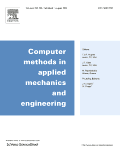
COMPUTER METHODS IN APPLIED MECHANICS AND ENGINEERING
Unveiling New Dimensions in Engineering through Computation.COMPUTER METHODS IN APPLIED MECHANICS AND ENGINEERING, published by Elsevier Science SA, is a premier journal that has significantly contributed to the fields of computational mechanics, computer science applications, mechanical engineering, and the mechanics of materials since its inception in 1972. With an ISSN of 0045-7825 and an E-ISSN of 1879-2138, this journal is recognized for its rigorous peer-review process and is consistently ranked in the Q1 quartile across multiple categories, including Computational Mechanics and Mechanical Engineering. Its impressive Scopus rankings place it in the top tiers of its field, with a percentile ranking of 98th in Computational Mechanics. Researchers, professionals, and students will find the journal's comprehensive scope and high-quality articles invaluable for advancing their knowledge and practices at the intersection of engineering and computation. Although not an open-access journal, its impactful contributions to both theoretical and applied research make it an essential resource for anyone involved in these dynamic fields.

Journal of Computational Applied Mechanics
Unlocking Insights in Computational Applied MechanicsJournal of Computational Applied Mechanics, published by UNIV TEHRAN, DANISHGAH-I TIHRAN, is an influential open-access journal that has been disseminating significant research findings since its inception in 2012. With a dedicated focus on the fields of Computational Mechanics, Mechanical Engineering, and Mechanics of Materials, this journal has garnered a Q3 ranking in multiple relevant categories as of 2023, indicating its burgeoning impact within the academic community. Although precise HIndex scores are currently unavailable, the journal's recognition is underscored by its Scopus rankings, placing it in the middle tier among its peers. The journal invites researchers, professionals, and students to contribute to and engage with the continually evolving discourse in applied mechanics, fostering innovation through the dissemination of quality research. As an open-access journal, it ensures that findings are readily accessible to a global audience, thereby enhancing collaboration and knowledge sharing in the scientific community.
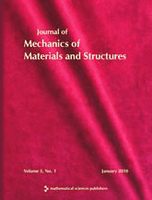
Journal of Mechanics of Materials and Structures
Advancing the Science of Materials and Structures.Journal of Mechanics of Materials and Structures, published by Mathematical Science Publishers, is a distinguished periodical in the field of Applied Mathematics and Mechanics of Materials. With the ISSN 1559-3959, this journal has been a pivotal platform since its inception in 2006, providing insights and advancements in the mechanics of materials and their structural applications. Operating out of the University of California, Berkeley, this journal not only boasts a respectable standing within its categories, ranking Q4 in Applied Mathematics and Q3 in Mechanics of Materials as of 2023, but it also serves a crucial role in fostering academic discourse among researchers, practitioners, and students alike. Although it does not currently offer open access, its contributions to the respective fields are invaluable, underscoring the relevance and importance of continued research in understanding material behavior and structural integrity. Whether investigating theoretical frameworks or engineering applications, the Journal of Mechanics of Materials and Structures remains an essential resource for anyone dedicated to the advancement of the science of materials and structures.